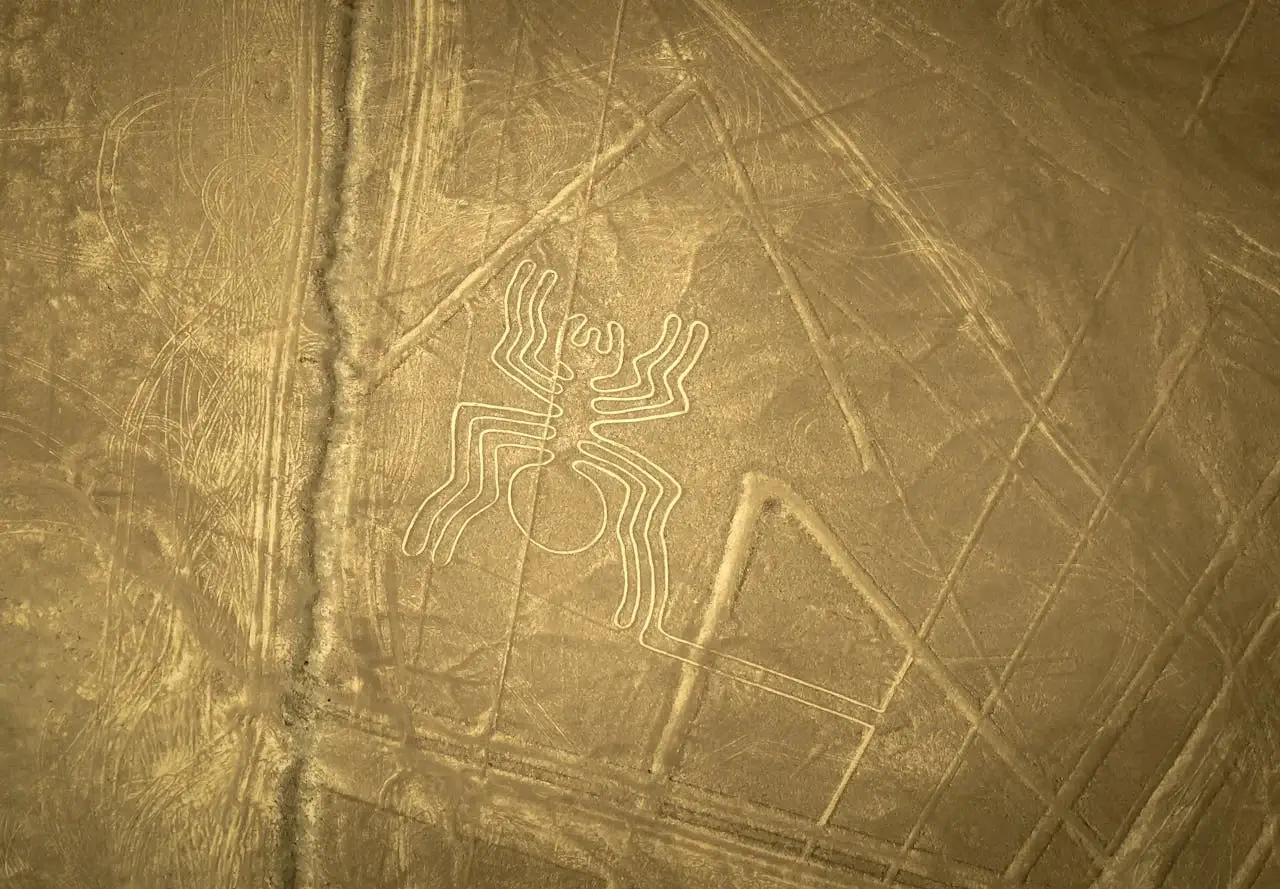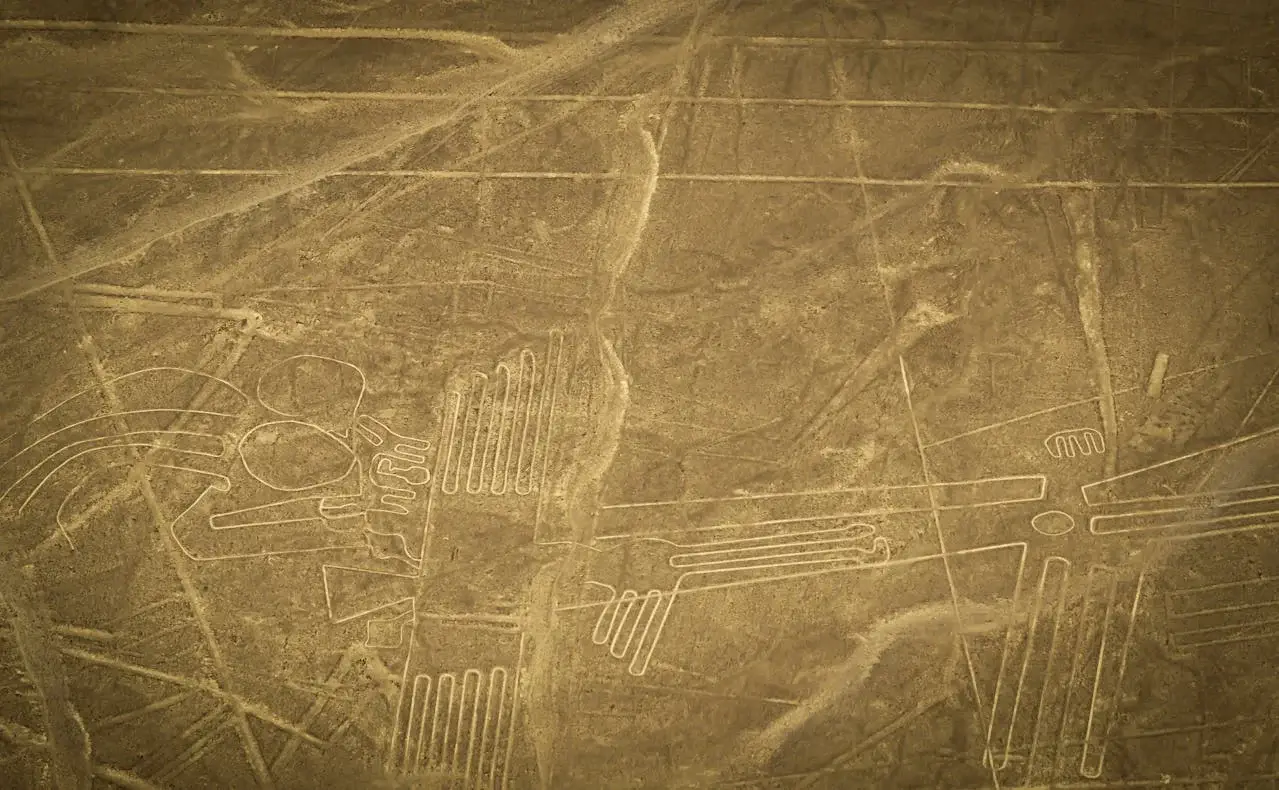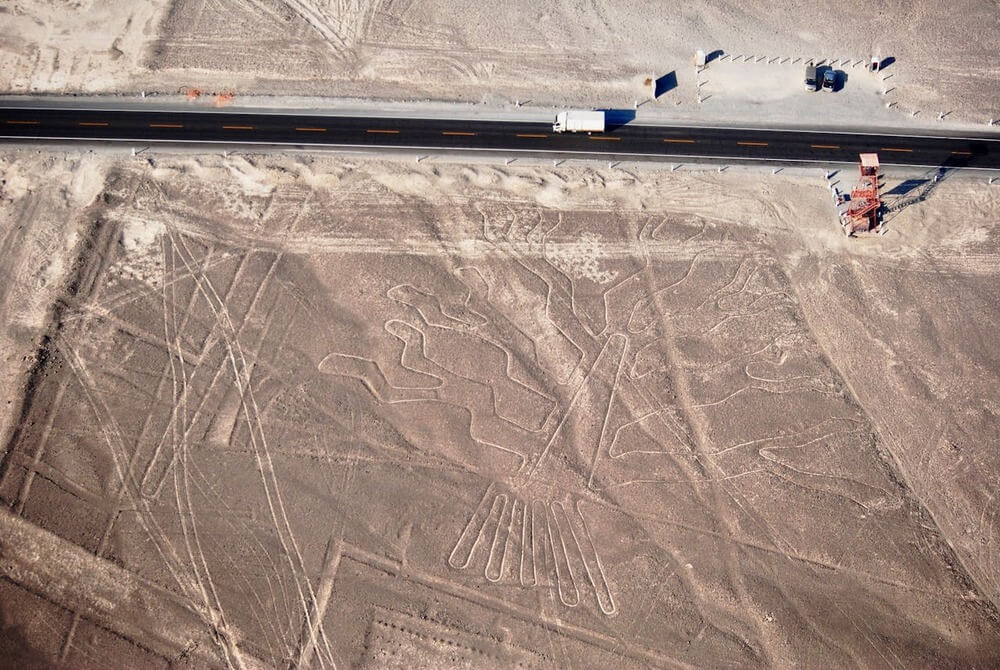Hidden in the arid deserts of southern Peru lies one of humanity’s greatest enigmas: the Nazca Lines. Stretching across the vast Pampas de Jumana, these immense geoglyphs shapes of animals, plants, and geometric patterns etched into the earth have fascinated explorers, historians, and travelers for decades. Declared a UNESCO World Heritage Site, the Nazca Lines remain a breathtaking example of ancient ingenuity, raising questions that still puzzle scientists today: Who created them? Why were they made? And what secrets do they hold about Peru’s past?
Whether you are an adventurer seeking to unravel mysteries, a family looking for an unforgettable journey, or a cultural traveler eager to understand Peru’s ancient civilizations, the Nazca Lines offer a once-in-a-lifetime experience. In this guide, we’ll explore their history, theories, meanings, and practical tips for visiting ensuring your journey is both inspiring and unforgettable.
What Are the Nazca Lines?
The Nazca Lines are a collection of more than 800 straight lines, 300 geometric figures, and 70 biomorphic designs carved into the desert floor of the Nazca Pampa, between the towns of Nazca and Palpa in southern Peru. Recognized as a UNESCO World Heritage Site since 1994, these geoglyphs vary in size some stretching over 1,200 feet long. Their sheer scale and precision have amazed both scientists and visitors for decades.
Want to know more about Why Is Peru Famous?
A Glimpse Into History
The Nazca culture thrived between 200 BCE and 600 CE, leaving behind one of the world’s most intriguing legacies. With simple tools, they cleared away the reddish iron-oxide pebbles from the desert’s surface, revealing the lighter-colored earth beneath.
Remarkably, the region’s dry and windless climate has protected these geoglyphs for centuries, preserving their mystery for future generations.
Although their existence was known locally, the Nazca Lines were brought to modern attention in the 1920s, when pilots flying over the Peruvian desert were astonished by the sheer scale of the massive drawings. Today, they stand as a timeless symbol of Peru’s ancient creativity and ingenuity.
Theories About Their Purpose
Although their exact function remains unknown, researchers have proposed several theories:
- Astronomical Calendar: Some scholars suggest that certain lines and shapes align with solstices, star constellations, or other celestial events, potentially serving as a sophisticated astronomical calendar for the ancient Nazca people.
- Religious and Ritual Use: The geoglyphs may have functioned as ceremonial pathways for ritual processions or offerings to deities, reflecting the deep spiritual and religious life of the Nazca culture.
- Water Source Markers: Given that the Nazca Desert is one of the driest regions on Earth, some researchers believe the lines were created to indicate underground water sources or locations crucial for agriculture and survival.
- Sacred Art and Symbolic Communication: Many of the figures depict animals, mythical creatures, or geometric shapes, which may have been symbolic messages intended for the gods, communicating religious or cultural narratives that were meaningful to the Nazca civilization.
While no single explanation has been universally accepted, the Nazca Lines continue to inspire both scholarly debate and cultural fascination.
The Figures and Their Meanings
Some of the most famous figures include:
- The Hummingbird: Symbol of life and fertility.
- The Monkey: Possibly linked to constellations.
- The Spider: Associated with rain and fertility.
- The Condor: A sacred Andean symbol of power and the sky.
- The Astronaut: A mysterious human-like figure that has fueled alternative theories.
Each geoglyph adds to the mystery, leaving visitors to imagine what they meant to the Nazca people.
Fun Facts About the Nazca Lines
- The figures are so large that they can only be fully seen from the air.
- German mathematician Maria Reiche, known as the “Lady of the Lines,” dedicated her life to studying and protecting them.
- New geoglyphs are still being discovered using drone technology.
- The Nazca Lines have survived for over 1,500 years thanks to the region’s unique climate.
Vulnerability and Threats to the Nazca Lines
Despite having survived for over a millennium, the Nazca Lines remain highly vulnerable to both human and environmental threats:
- Illegal Mining and Urban Expansion: Unregulated mining activities and the growth of nearby settlements pose a significant risk to the delicate desert surface where the geoglyphs are located.
- Climate Change and Natural Erosion: Shifts in weather patterns, occasional heavy rainfall, and wind erosion can gradually wear away the lines, threatening their long-term preservation.
- Human Negligence: Even minimal contact can cause irreversible damage. Foot traffic, vehicles, or careless activities near the geoglyphs can destroy sections of these ancient artworks.
A notable example occurred in 2014, when Greenpeace activists unintentionally damaged a portion of the lines, emphasizing how fragile and precious these geoglyphs are. Protecting the Nazca Lines is critical for preserving one of Peru’s most iconic and mysterious cultural treasures.
Protection and Sustainability
Today, the Peruvian government and UNESCO have established strict measures for the protection of the Nazca Lines. Sustainable tourism is essential: visitors are encouraged to explore them responsibly, ensuring their preservation for future generations.
How to Visit the Nazca Lines
Visiting the Nazca Lines is a once-in-a-lifetime experience. Here are some options:
- Scenic Flight: The best way to appreciate the geoglyphs is from the air. Flights depart daily from Nazca or Pisco airports.
- Observation Tower: A more affordable option is the 13-meter tower along the Pan-American Highway, which offers views of some figures.
- Guided Tours: Joining a guided excursion provides cultural context, history, and safe access to the viewing platforms.
Book flights with reputable operators and consider combining your trip with nearby attractions like the Chauchilla Cemetery or Cantalloc Aqueducts.
Frequently Asked Questions (FAQ) About the Nazca Lines
Where are the Nazca Lines located?
In the Nazca Desert, about 400 km south of Lima, Peru.
Who created the Nazca Lines?
They were created by the Nazca culture between 200 BCE and 600 CE.
Why were the Nazca Lines made?
The purpose remains uncertain, but theories include astronomical, religious, and water-related functions.
Can you see the Nazca Lines without flying?
Yes, from the observation tower or nearby hills, although the best view is from above.
Are the Nazca Lines still being discovered?
Yes, thanks to modern technology like drones, archaeologists continue to uncover new geoglyphs.
The Nazca Lines are more than ancient drawings etched into the desert they are a testament to human ingenuity, artistry, and cultural devotion. Each line, figure, and geoglyph tells a story of a civilization that thrived in one of the world’s harshest landscapes, leaving behind a mystery that continues to captivate visitors from around the globe. Experiencing these colossal works of art, whether soaring above them in a scenic flight or observing them from a viewing platform, is a journey into Peru’s rich history and a chance to connect with the legacy of the Nazca people.
Ready to witness the enigmatic Nazca Lines for yourself? Let Andean Travel Experience craft your tailor-made adventure through Peru’s most extraordinary sites.



